Types of Reactions in Organic Chemistry - Chp 23 nf
1/33
There's no tags or description
Looks like no tags are added yet.
Name | Mastery | Learn | Test | Matching | Spaced |
|---|
No study sessions yet.
34 Terms
Mechanism of the monochlorination of methane
Substitution Reaction
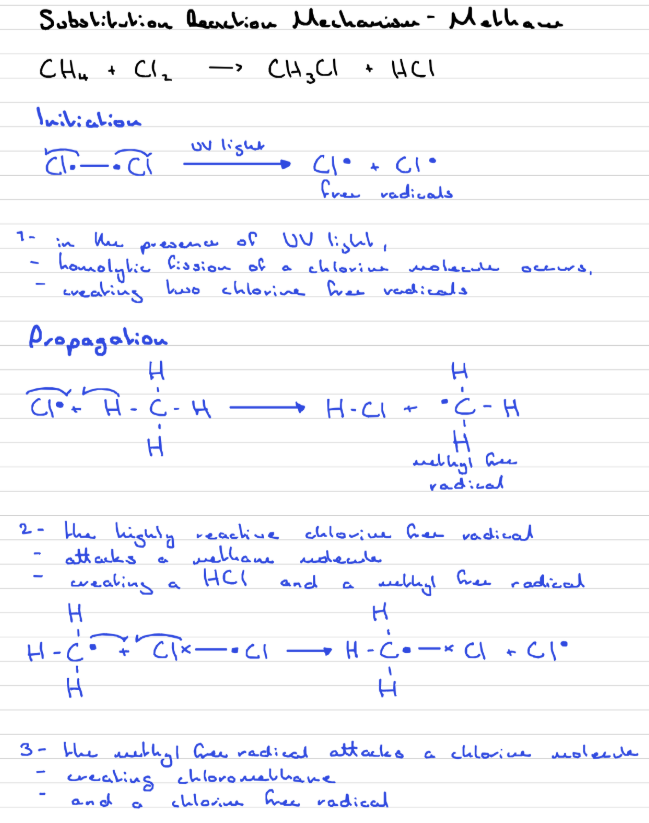
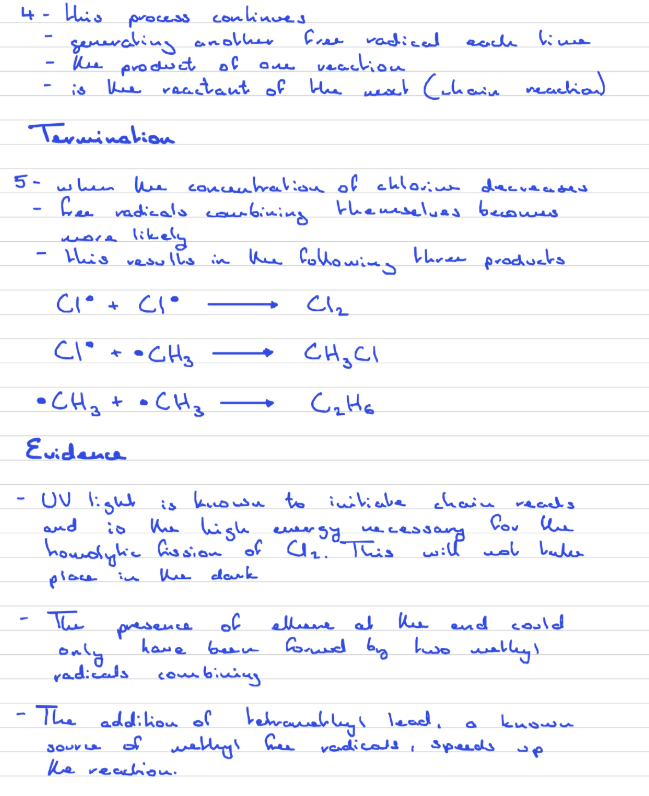
Mechanism of the monochlorination of ethane
Substitution reaction
Addition reaction of Ethene with Bromine
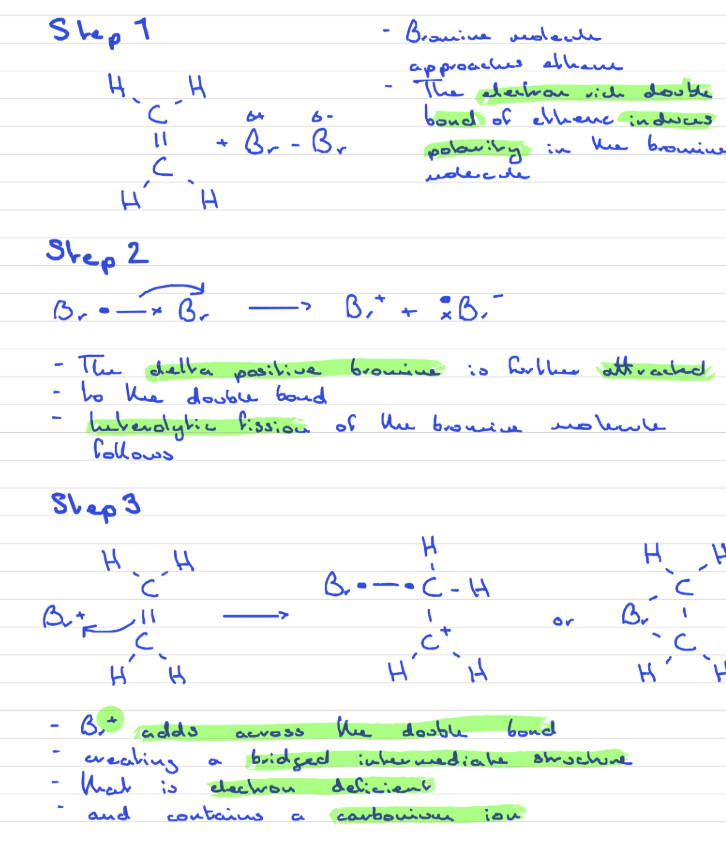
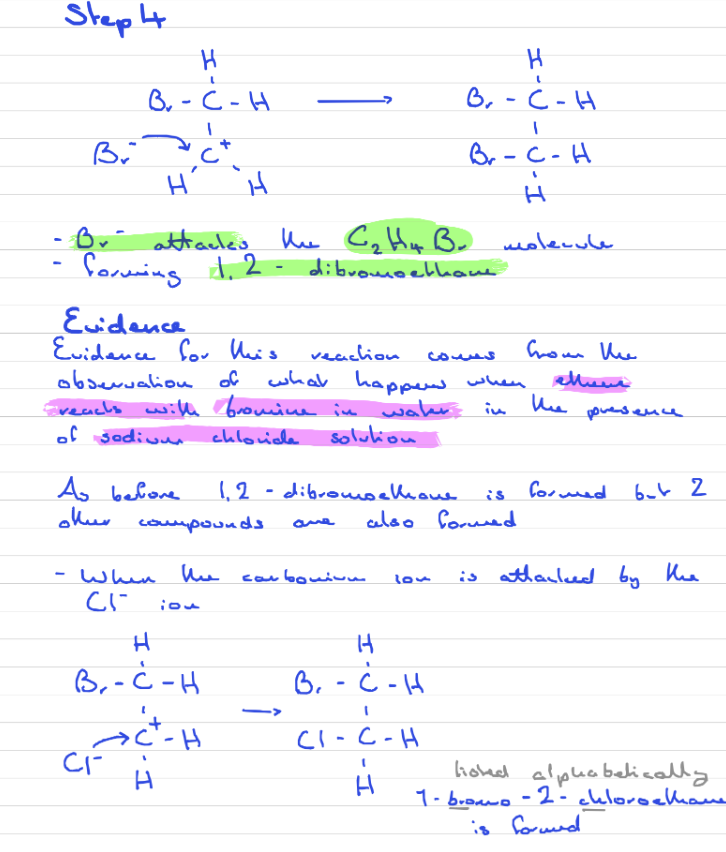
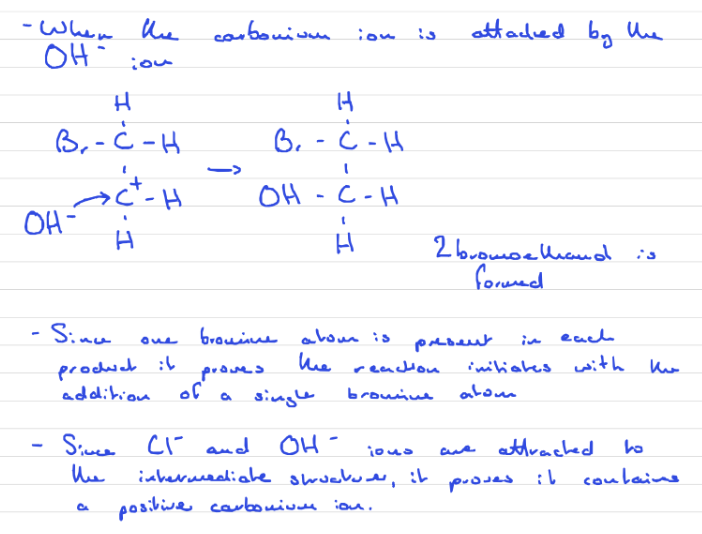
Addition reaction of Ethene with Chlorine
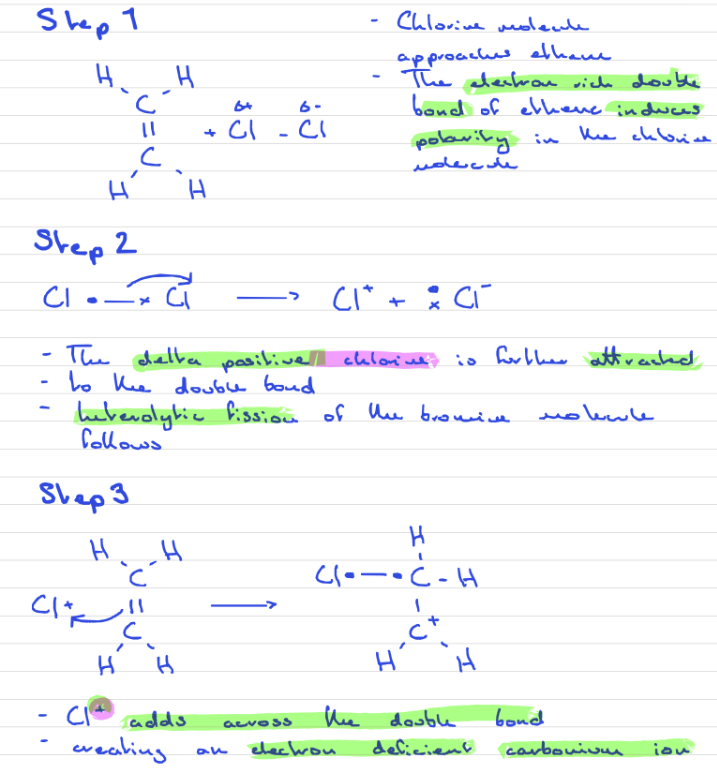

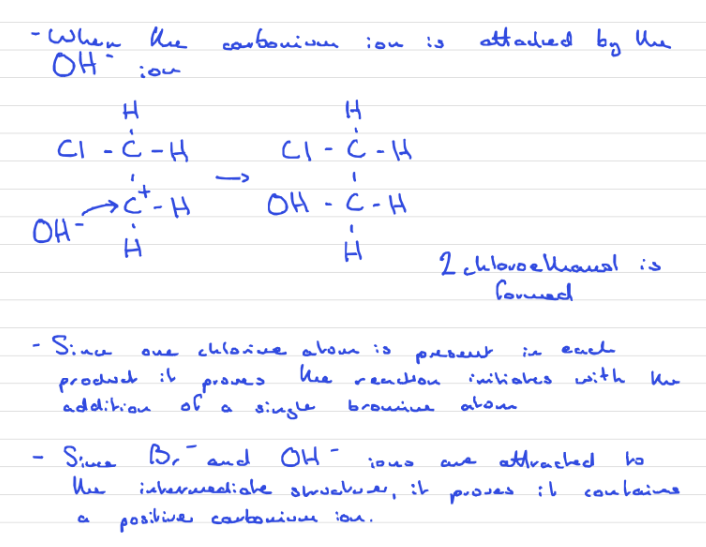
Addition reaction of Ethene with Hydrogen chloride
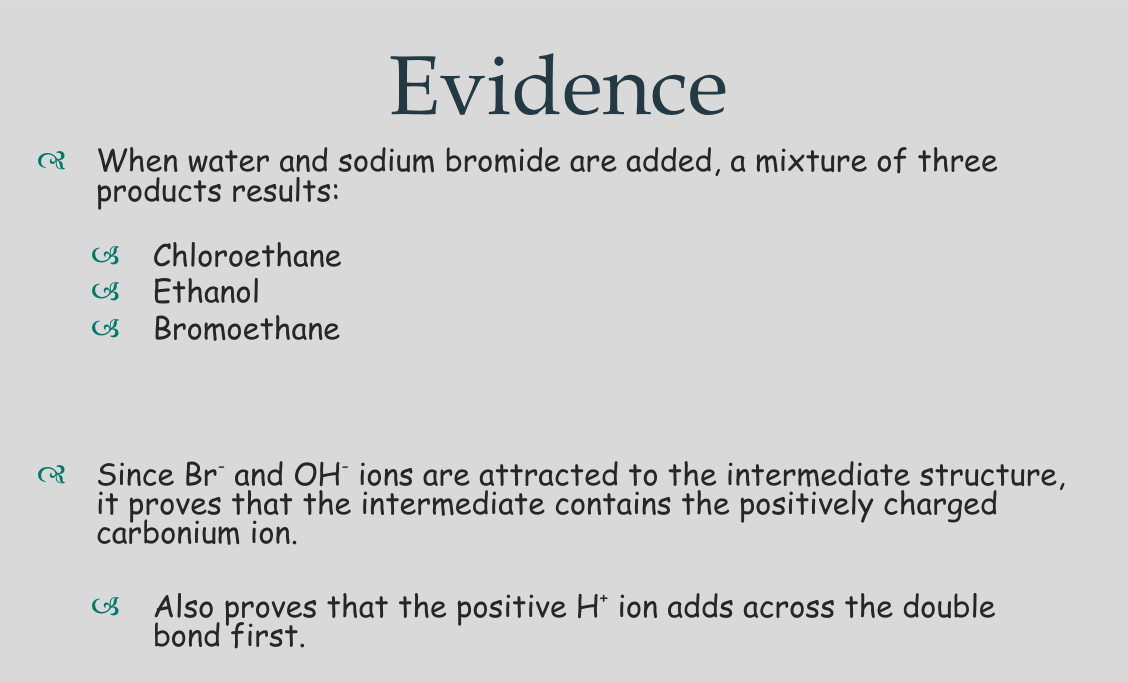
Synthesis of PVC
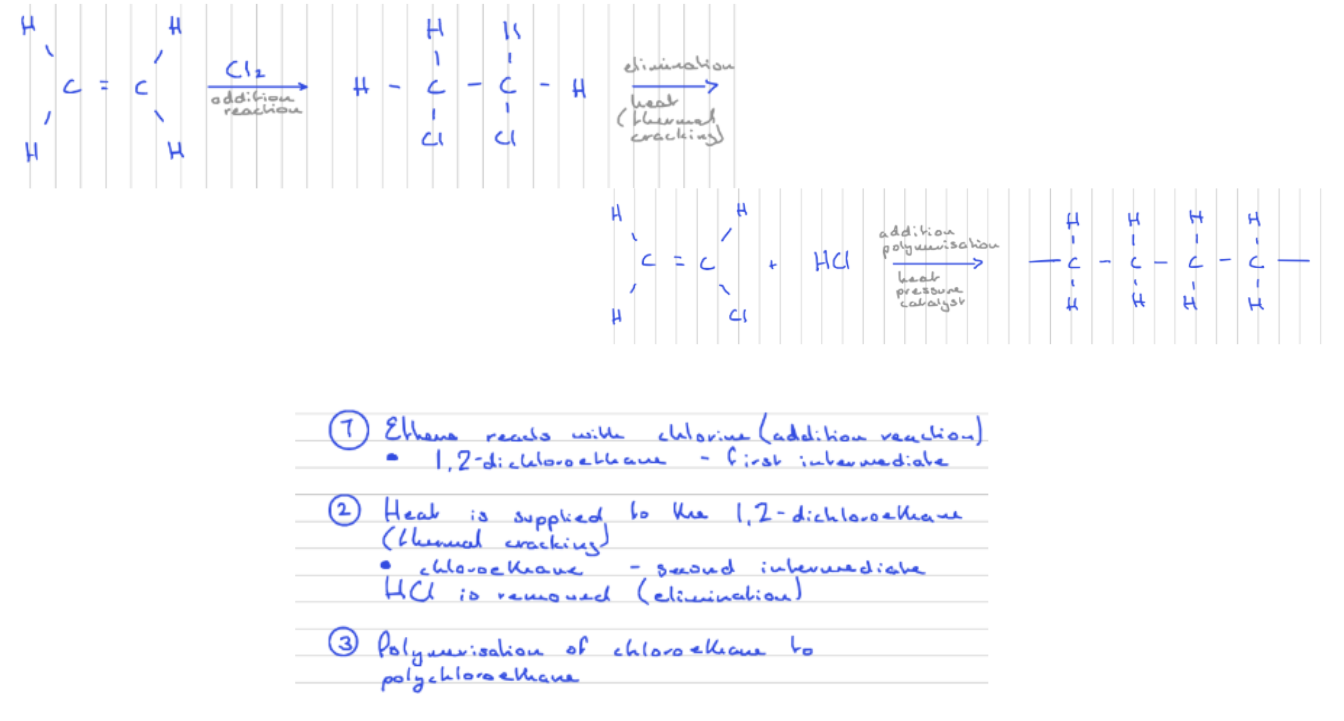
Should be chlorines in the PVC structure
Subsitution reaction
a chemical reaction in which an atom or group of atoms in a molecule is replaced by another atom or group of atoms
Mechanism
of a reaction is the detailes step-by-step description of how the overall reaction occurs
Chain reaction
is a reaction that continues on and on because a product from one step of the reaction is a reactant for another step of the reaction
Addition reaction
one in which two or more molecules react together to form a single molecule
Polymers
long chain molecules made by joining together many small molecules
Repeating
unit of a polymer is that part of the polymer whose repetition produces the complete polymer chain except for the end groups
Elimination Reaction
is one in which a small molecule is removed from a larger molecule to leave a double bond in the larger molecule
Redox reaction
occurs whenever there is a transfer of electrons from one chemical species to another
Give an example of a non-flammable organic compound:
a fully halogenated alkane
such as bromochlorodifluoromethane
Why are fully halogenated alkanes no longer being used?
negative impact on the environment
Name 2 common oxidising agents:
Potassium permanganate (VII) - KMnO4
Sodium dichromate (VI) - Na2Cr2O7
- when acidified using conc. sulfuric acid they are strong oxidising agents, and are themselves reduced
Describe the colour of acidified KMnO4 in its different oxidation states:
Purple - contains the MnO4- ion (Mn - ON of +7)
Brown - intermediate oxidation state (Mn - ON of +4)
Colourless - final oxidation state (Mn - ON of +2)
Describe the colour of acidified Na2Cr2O7 in its different oxidation states:
Orange - contains the Cr2O7-2 ion (Cr - ON of +6)
Green - final oxidation state (Cr - ON of +3)
What are primary alcohols oxidised to?
Primary alcohol → Aldehyde → Carboxylic Acid
What are secondary alcohols oxidised to?
Secondary Alcohol → Ketones
Write the reaction of ethanol with acidified sodium dichromate (VII)

Describe the reaction for the preparation of ethanal:
Set up apparatus for distillation.
Place water and anti bumping granules in the pear shaped flask.
Whilst keeping the pear shaped flask under cold water add conc. H2SO4
Into the dropping funnel add sodium dichromate, water and ethanol. (Solution will be orange.)
Heat the acid until it is just boiling and then remove heat source (reaction is exothermic so temperature will be maintained).
Slowly add the dichromate/ethanol mixture at a rate that keeps the acid bubbling.
Distil as the ethanal is formed, keeping the distillate in an ice bath since ethanal is volatile.
To purify redistill the distillate, collecting the fraction that distils across at 20-23 oC.
What is the limiting reagent in the experiment for the preparation of ethanal?
the oxidising agent is the limiting reagent
the alcohol is in excess
Write the half equations for the oxidation of ethanol to ethanal
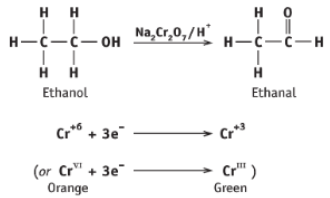
Draw the oxidation of ethanol to a carboxylic acid

Describe the reaction for the preparation of ethanoic acid
Set up apparatus for reflux
Add sodium dichromate and dilute sulfuric acid into the round bottomed flask. Add some conc. H2SO4 whilst keeping the flask cold.
Place some ethanol and water in the dropping funnel and slowly add the entire contents to the round bottomed flask.
Remove the dropping funnel and when the reaction has subsided reflux the mixture for 20 – 30 minutes using a water bath.
Rearrange for distillation (without a water bath, direct heating required due to temperature rising above 100 oC)
The bold are precautions to prevent excessive heat production
Write the half equations for the oxidation of ethanol to ethanoic acid
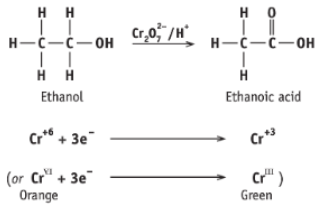
Organic Reaction Scheme
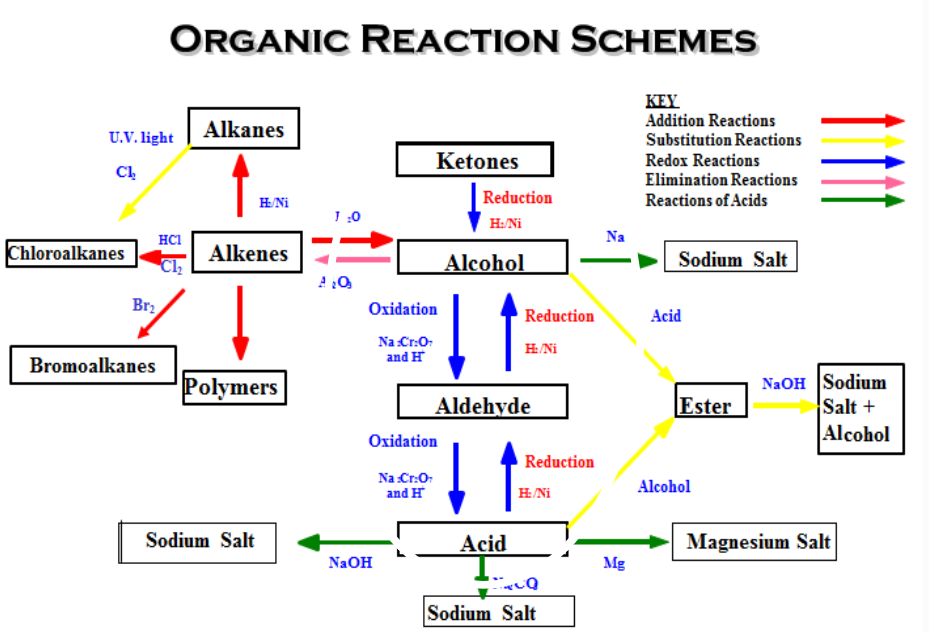
Why can alcohols behave as acids?
the polarity in the O-H bond makes it easier for the hydrogen atom to break off as a H+ ion
Describe how alcohols behave as an acid?
they are very weak acids, 100 times weaker than water
they will react with very reactive metals, such as the alkali metals
they will NOT react with bases such as carbonates or hydroxides
What are the conditions necessary for a carboxylic acid to be reduced to the corresponding aldehyde and alcohol?
in the presence of hydrogen and a nickel catalyst
Why can carboxylic acids behave as acids?
Inductive effect - the slightly positive carbon atom in the COH part of the molecule, draws electrons away from the hydrogen atom, resulting in the ionisation of the hydrogen atom, thus the carboxylic acids lose the proton of the COOH group readily
Stability of the carboxylate ion - when the carboxyl group loses a proton it forms the negative carboxylate ion, forming a resonance hybrid structure where the negative charge is spread over three atoms giving it extra stability, thus allowing it to lose protons readily
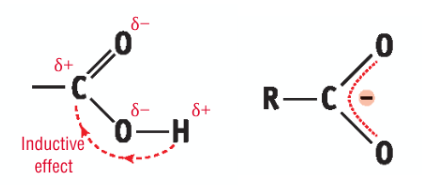
Describe the properties of ethanoic acid:
vinegar odour
changes universal indicator paper from green to red, as it is acidic